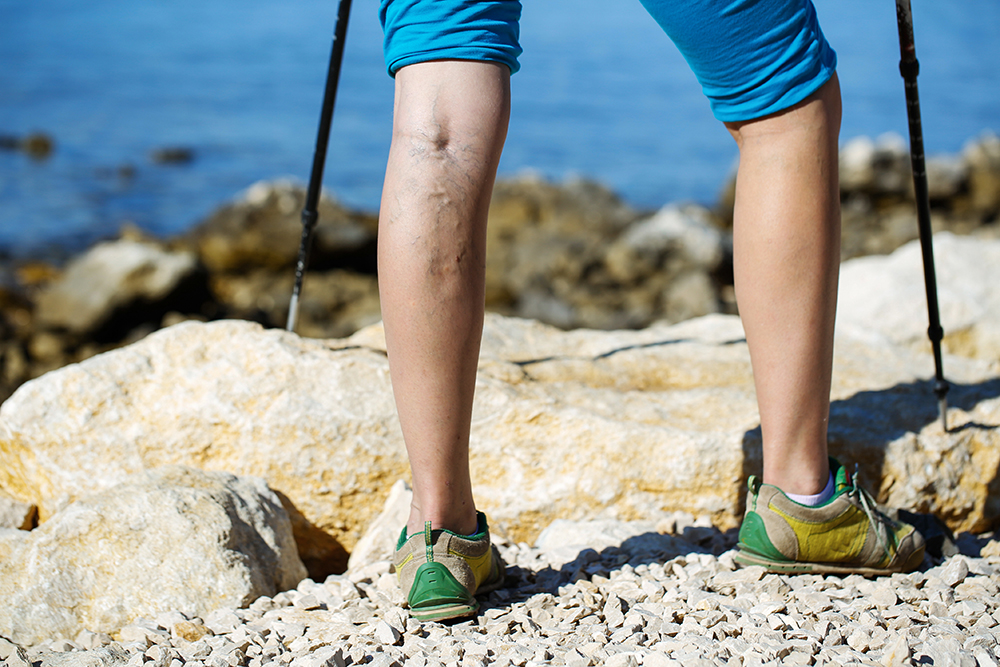Varicose veins are a very common condition in the United States, affecting one out of two people age 50 and older, and 15 to 25 percent of all adults. These dilated blood vessels in the lower extremities are the result of damaged valves which allow blood to pool in veins. This pooling causes the veins to appear dark purple or blue and visibly bulge from the leg’s surface.
The word “varicose” is derived from the Latin root word “varix,” which is translated in English as “twisted.” Any vein in the body may become varicose, though certain contributing causes of varicose veins make the legs the most susceptible to this condition. Varicose veins occur in the legs and lower extremities because standing and walking increases the pressure in the veins in the lower half of the body, and the higher pressure can compromise the functioning of the valves.
In healthy, normally functioning veins, tiny valves placed throughout the vessel allow appropriate amounts of blood to flow through the vein, in one particular direction. When these valves malfunction, circulation isn’t regulated properly, overfilling the vein and/or allowing blood to flow in the wrong direction. This causes the unsightly, dark coloration and texture that are the visible indicators of varicose veins.
While varicose veins can appear unsightly and be a source of embarrassment for some individuals, the affected veins can also cause uncomfortable medical symptoms. Sensations of heaviness, aching, and tingling can be attributed to the presence of varicose veins. While not life-threatening in themselves, varicose veins may lead to serious problems if left untreated. At a minimum, people with varicose veins should have them evaluated by a specialist because these veins can serve as an indication that the individual is at a higher risk of other, more serious disorders of the circulatory system.

